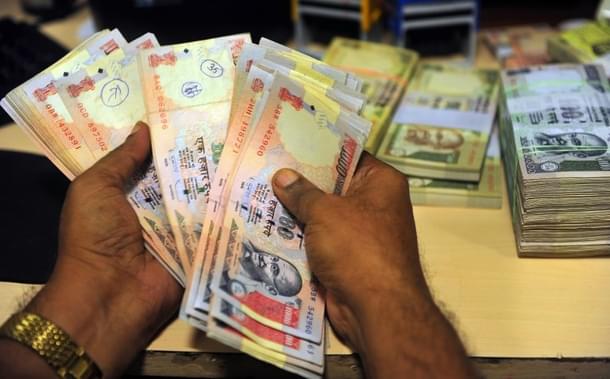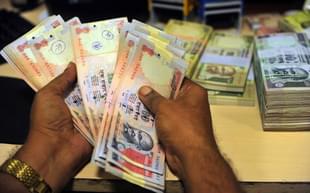Economy
Is Demonetisation Worth It? Here’s How To Tell If The Costs Outweigh Benefits
R Jagannathan
Nov 10, 2016, 04:20 PM | Updated 04:20 PM IST
Save & read from anywhere!
Bookmark stories for easy access on any device or the Swarajya app.


A question that will always haunt us after the demonetisation of Rs 500 and Rs 1,000 notes is this: did it work? Was it worth the cost of printing Rs 12,000 crore of new currency, and the actual man-hours spent in implementing the scheme?
The right way to answer this question is with another question: did those who have stacks of Rs 500 and Rs 1,000 notes, get hurt or not? And did they get hurt more than the cost incurred by the government. Former Finance Minister P Chidambaram estimates the total cost at Rs 15,000-20,000 crore.
That leads us to another question: how do we know that someone with black money is getting hurt? And by how much?
The answer is to look at the data.
First, let’s start with the estimate that the total value of currencies in the Rs 500 and Rs 1,000 denominations is around Rs 14,28,000 crore (as at the end of March 2016). The proportion of this money that does not come back to the Reserve Bank for destruction will give us one estimate of the damage done to black money hoarders. What does not come back is effectively immobilised. It can still circulate among the uninformed, like fake currency, but it cannot circulate in large numbers. The Times of India has reported that burnt notes of these denominations were found recently at Bareilly in UP. Clearly, the demonetisation is beginning to have an impact. These notes could, of course, be fake currency burnt by crooks who believe there may be a raid coming.
Second, the money that is given to banks for exchange and conversion into new notes may not all be kosher. Banks must convert any such notes into deposits if the notes are genuine. The notes coming in could belong to black money hoarders disclosing the money as genuine payments for goods or services supplied. In other words, bills backdated to 8-11 November are likely to be over-invoiced to show genuine earnings. To the extent these “fake” earnings result in higher taxes to the government, Arun Jaitley should not worry. Only if these earnings are shown in loss-making entities which don’t pay tax should his antennae go up: it would mean another legal evasion even after bringing black money into the books suddenly. The taxman must look closely at these transactions to ensure that there is no sudden bloat of earnings just after 8 November.
Third, also look for any sudden surges in export proceeds or fall in import costs. Over-invoicing of exports is one way of bringing cash into your formal accounts in India while remitting it from secret accounts abroad. This could happen if you are disposing off your black cash in India and need to top up from elsewhere. Under-invoicing of imports would be another way to retain cash in your local books while compensating your counter-party abroad. Taxmen should watch out for any abnormal surges in exports or drops in imports during the coming months.
In 2010-11, a Kotak Securities report noticed a sudden surge in exports and FII inflows that were totally out of character. The report noted: “"Our study of exports data of major engineering companies (including automobiles and metals) shows that the increase in their exports does not reconcile with the steep increase in official exports data. In fact, the gap is quite substantial" (read the details here).
Fourth, a sudden surge (and subsequent drop) in zero balance Jan Dhan accounts, or even the whole universe of no-frills accounts, will be another tell-tale indicator of who is being used for converting black to white. The poor, even if they have got this money, should not be harassed, but they can be asked to rat on the rich who used them and given a further reward.
Fifth, any abnormal surge in temple donations between 9-11 November, or even a day or two after, should be another indicator of where the black money has gone.
Sixth, sudden spikes in gold prices and sales of gold jewellery too should be noted.
Seventh, a larger-than-expected tax jump in the coming months would be the best testimony of the efficacy of demonetisation.
A 2012 committee report set up by the finance ministry the examine the efficacy of demonetisation is supposed to have concluded that it does not work. The report noted:
Demonetisation undertaken twice in the past (1946 and 1978) miserably failed, with less than 15 percent of high currency notes being exchanged, while more than 85 percent of currency notes never surfaced as the owners suspected penal action by government agencies.
This report surely has got at least something wrong: if it is saying that 85 percent of black money was simply destroyed (after all, you can’t use demonetised notes), then it has indeed hurt black money holders. That is surely success of a sort?
Defining success needs the use of more nuanced data and measures. Some of the above tell-tale signs will help.
Jagannathan is former Editorial Director, Swarajya. He tweets at @TheJaggi.





